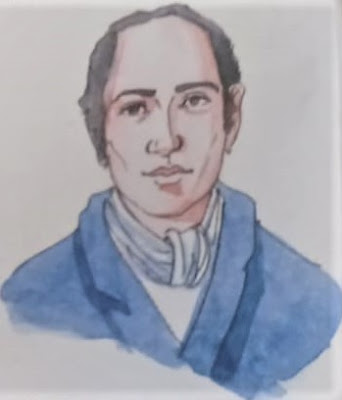How did the British benefit by Subsidiary Alliance and Annexation Policy?
Wellesley's Policy of Expansion
When Wellesley came to India as the Governor General, cut throat competition existed between England and France. It was necessary to check France from becoming powerful in India so as to expand the British Rule in India. Wellesley introduced a new plan which was known as the Subsidiary Alliance. As per the scheme, any princely state that accepted the alliance had to keep and maintain the British Army as well as keep a British representative in the Royal Court. This way, the British could maintain their Army without spending any money. However, the princely states were not allowed to utilize the army at their own will. This system, which made many feels secure in the beginning, made them feel enslaved and threatened. Subsidiary Alliance acted like a slow poison for the princely states of India. The Indian States that became the victims of the Subsidiary Alliance were Hyderabad, Mysore, Ayodhya, Jodhpur, Gaekwads of Vadodara, Peshwas of Pune and Scindhias of Gwalior.
Nizam of Hyderabad was the first victim of Wellesley's 'Subsidiary Alliance'. Then it was Mysore and Ayodhya. Tanjore and Karnataka met with with the same fate. The British made the Marathas fight amongst themselves and consequently made them accept the Subsidiary Alliance.
Owing to the losses incurred by Nizam in his fight with Marathas, he was the first to accept this Alliance. Tipu Sultan of Mysore refused to do so, but after the British victory in the Fourth Anglo-Mysore War, Mysore was forcedto become a subsidiary state. Maratha chief fought amongst themselves after the death of Nana Fadnavis. One by one all the Maratha states became the victim of 'Divide and Rule Policy' of the British. The Other states, namely Ayodhya, Gorakhpur, Tanjore, Karnataka, Farukhabad, also suffered the same fate. In this way, within a span of 7 years, Wellesley expanded the Company rule and made the British the supreme power in India.
Dalhousie's Policy of Annexation
The aim of Wellesley's policy of expansion was to enslave the native kingdoms without using much of the British resources.
The states that accepted the Subsidiary Alliance considered the British as their friends. Eventually, in the absense of internal and external threat they became irresponsible and their administration started deteriorating. The outcome of the conspiracy of the British was the anarchy in many princely states. The Indian rulers got trapped in it. The British got an excuse to start interfering into the internal affairs of these states on the pretext of putting an end to the anarchy. They annexed many states under the same excuse. Thereafter, Burma (now myanmar) and regions of Punjab were also annexed. If the king died without a son, his state was annexed. In this way Satara, Jhansi, Nagpur, etc. became the victims of 'Policy of Annexation'.
Dalhousie aimed at helping the British traders to make huge profits from the trade of tea, coffee and cotton by capturing the areas that produced these commodities on a large scale. To consolidate the British rule in India and to run the administration smoothly, many changes were introduced by Dalhousie in India. During his tenure, the first railway line was started between Mumbai and Thane (1853 C.E.). The modern postal system started in India and wireless system between India and England too was introduced during his tenure. He passed laws to ban child marriage and advocated widow re-marriage. English education spread in India during this time. The first three universities in India were established in Mumbai, Chennai and Kolkata in the year 1857 C.E. Thus, these reforms were basically for the expanison of British rule and ease in administration. Althrough Indians benefitted later on, they had to suffer a lot with the introduction of British reforms.
Dissatisfaction of people
After the policy of Subsidiary Alliance, Dalhousie's policy of Annexation shook the whole nation terrible. This resulted in the dissatisfaction among the people towards the British. You must have seen the film 'Kranti' and 'Mangal Pandey'. If you have not seen then try and see these movies. At this time, the people were suppressed under the dictatorial regime of the British. In addition to that, the reforms made by Dalhousie added fuel to fire. Different people reacted differently to railways, facilities of post and telegraph and western education. Orthodox people felt that the British wanted to destroy their culture. The reforms done by the British were basically for running the administration smoothy. The dissatisfaction of people had reached a point of saturation and they were in the state of rebellion which resulted in the freedom movement of 1857.




Comments
Post a Comment